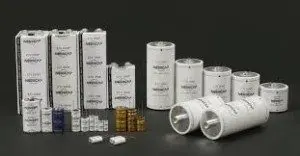source: Nesscap news
TORONTO, ONTARIO and SEOUL, SOUTH KOREA–(Marketwired – Nov. 7, 2016) – Nesscap Energy Inc. (the “Company” or “Nesscap”) (TSX VENTURE:NCE), a global leader in research, development and manufacturing of ultracapacitor products, today announced the introduction of its new N60™ 3-volt (3V) 3400-farad ultracapacitor cell.
Delivering 40% more energy and 42% greater power-density, compared with Nesscap’s 2.7-volt 3000-farad cell, N60™ significantly raises the standard for performance, all within the industry-standard 60mm cylindrical form factor. The cell’s rugged mechanical design ensures exceptional vibration and shock performance, in compliance with ISO 16750-3 Tables 12 & 14, SAE J2464 and IEC 60068-2-27. The product offers a number of benefits to system integrators including the ability to scale up system voltages to attain more power and energy within the size and weight specifications of their existing designs. Systems can also be designed with fewer cells resulting in smaller size, reduced weight and lower cost. N60™ may be used as a standalone solution or integrated with battery technology to achieve optimal power, energy, and cost parameters, depending on the needs of the application.
“The market is hungry for solutions which provide more power and energy, without sacrificing lifetime, at a reasonable cost,” said Jim Zuidema, Chief Executive Officer of Nesscap. “Our development team has delivered a truly superior product which represents a major step forward for the industry and further establishes Nesscap’s technology leadership and highly regarded product line.”
“N60™ is all about shifting the paradigm and providing customers with possibilities to significantly boost performance, reduce size and weight, and lower cost,” said Robert Tressler, Chief Business Development Officer of Nesscap. “This product will enable us to expand our existing business and reach new opportunities in the transportation, grid, and renewable energy segments.”































